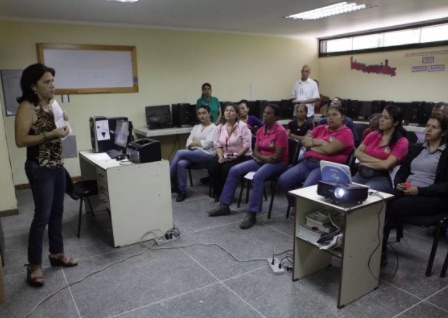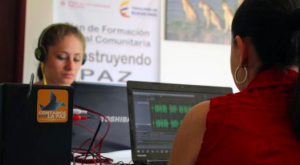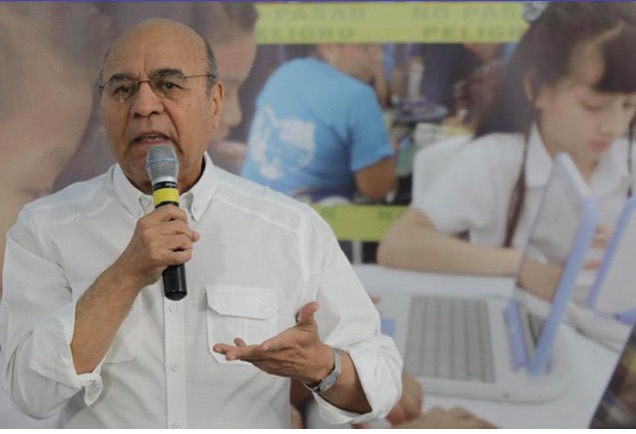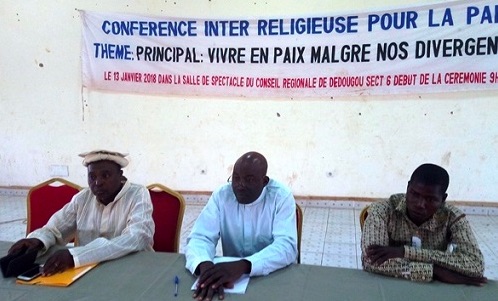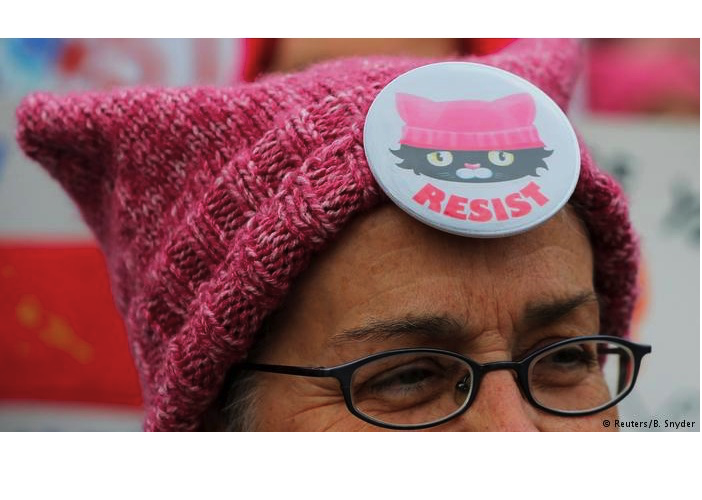FREE FLOW OF INFORMATION
An article from La Jornada Zacatecas (translated by CPNN)
January 20: The Zacatecan Radio and Television System (Sizart) will modify its contents to introduce as a”the culture of peace” as a transversal theme. The workshop “Sounds for peace, the acoustic landscape of public media in Zacatecas” in which 50 radio and television producers participated, reviewed the programmatic grids “to know what we are doing”, said the director general of Sizart, Teresa Velázquez Navarrete.

(Click on photo to enlarge)
She added that two experts collaborated in this review, one of them from Colombia, who was asked to offer an advance of what is being done in that country in the context of the peace process in the media, “because here we already walk more or less in the same struggle.”
Tito Ballesteros López, a radio producer of the “free networks of Colombia”; was a participant in the recently held International Radio Biennial along with Graciela Martínez Matías, who is a research professor at the UNAM, a PhD in Political Science and an advocate for the Radio Education audiences. The “critical and self-critical review was made with all the producers of the -Sizart-, and then we realized that to remake the contents we would have to speak of a culture of peace “.
The workshop “Sounds for peace, the acoustic landscape of public media in Zacatecas” lasted 30 hours and was held from Monday to Friday of this week with discussions and contributions. Velázquez Navarrete and experts proposed the drafting of a Manifesto “Public radio as a force for peace in Mexico”, which was read yesterdayby the participants.
“We came up with the experience of Colombia with a manifesto to start making a navigation chart of the public media, which we would like everyone to share, but for the time being we assume it as something we can do. We can not speak for others.”
Tito Ballesteros, also a research professor at the Universidad Pontificia Bolivariana located in Bucaramanga, Colombia, mentioned in a short interview the projects he has participated in, referring to the peace process in his country. The 2016 Peace Agreement, a document of 297 pages, was diffused to the people through social networks and read over the radio, point by point.
In Colombia, there was a radio series in which about 20 professors from different cities participated: Cali, Medellín, Cartagena and Bogotá, who were asked to offer their opinion and discuss the points of the Peace Agreement. Also the European Union supported a training workshop for community radios, at the proposal of President Juan Manuel Santos.
“And that’s how training was done at a national level in the different regions reflecting on the agreements, and how to build stories for peace.”
Ballesteros Lopez mentioned another collaboration with the European Union, “in which the Colombians who were in the media accessed content that had to do with acts of peace.”
(Article continued in the column on the right)
(Click here for the original Spanish version of the article)
Questions related to this article:
Journalism in Latin America: Is it turning towards a culture of peace?
How can peace be promoted by radio?
(Article continued from the column on the left)
The manifesto read yesterday is divided into a series of sections, one aimed at professionals of public radio, which talks among other points, their training and training on issues related to “tolerance, reconciliation, inclusion and peace, so that they are reflected in the day to day of radio programming.”
The manifesto calls on the media to avoid “inappropriate practices in the use of discriminatory speech, verbal and visual language that appeals to violence”, and “urges those who communicate their ideas from the microphones of public media to speak calmly when reporting (…) to reassure the audience.”
Regarding the management of news, it is proposed to start and end programs with positive news, to include at least one story related to “peace events” and to avoid “headlines with half-truths and / or sensationalists” and to “focus the information in depth” , as well as to respect the privacy and dignity of persons.
The section dedicated to music suggests to diffuse sound montages that “invite serenity, calm and calm before moments of crisis”, to support the use of musical artistic expressions as a form of dialogue and healthy coexistence, and to avoid content that appeal to violence, as well as to highlight national productions “that exalt our values and heritage”.
Regarding programming in general, the manifesto calls on each radio station to feature marathons at least every quarter, with “readings, verses, songs and poems related to acts of peace and healthy living”, open spaces to offer profiles of people who have contributed to the peaceful coexistence of the country and the world, and to expand the content to “generate moments of reflection on the culture of encounter”.
It also suggests that program makers should “use sound landscapes from spaces previously suffering from violence and now recovered as spaces of peace”, in order to show how change is possible. And they should strengthen the Mexican identity based on manifestations of popular culture, high culture and history.
With regard to culture, it is added that “radio actors” need to know the country’s past to understand its current context “and how violence has spread to the different corners of the nation”.
Finally, a section was added for the audiences, of whom it was said in yesterday’s event, that their participation is expected in this new communication paradigm.
The manifesto calls for a horizontal communication by the media with audiences to work together in actions for peace through audiovisual media, as well as the importance of the right of reply as a mechanism to make Mexico a tolerant country, and the consolidation of public spaces of citizen participation where the audiences can produce content in order to end the “unidirectional” media.
Finally, it is stated that audiences from social networks “also have the responsibility to share information inspired by values such as truth, respect, and responsibility.”
Yesterday, Tito Ballesteros also announced that there will be “a 30-episode radio program. 15 minutes of duration, which will be broadcast by all public broadcasters in the country. That is, Zacatecas and the Sizart will present a sound program for all radios derived from the manifesto released yesterday.
The students of communication, producers and conductors of Sizart radio and television, communicators, and the Attorney General of the State of Zacatecas, the Deputy Prosecutor for Prevention, the Municipal President of the State Capital, and the General Secretary of the UAZ, all participated and contributed elements to enrich the aforementioned document.
